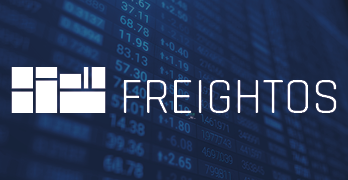FBX Index February 2023: Market Summary

The Freightos Baltic Global index fell 12% to $1,946/FEU in February to a level last seen in August 2020, as rates decreased across most major tradelanes.
This rate is 80% lower than a year ago, but still 31% higher than in 2019. After a stable January, Transpacific rates fell significantly to both coasts in February as congestion continued to ease on the East Coast and demand continued to decline.
Asia – US West Coast rates fell 22% to $1,091/FEU. This price is 93% lower than last year, 33% lower than in February 2019, and, in fact, lower than at any point in 2019. Rates to the East Coast fell 16% to $2,422/FEU, 87% lower than a year ago and 20% lower than in 2019.
Asia – US West Coast rates fell 22% to $1,091/FEU. This price is 93% lower than last year, 33% lower than in February 2019 and, in fact, lower than at any point in 2019. Rates to the East Coast fell 16% to $2,422/FEU, 87% lower than a year ago and 20% lower than in 2019.
Rates from Asia to N. Europe decreased 5% after climbing in January as carriers contend with excess space. Prices closed the month at $2,608/FEU, 81% lower than last year, though still 63% higher than 2019 levels.
Transatlantic rates decreased 17% to $4,814/FEU – their lowest level since June 2021 – and are 30% lower than a year ago, although still more than double their level in 2019. Easing congestion and the shift of capacity to this lane are likely combining with a more gradual decrease in volumes to contribute to the downward rate trend.
Ex-Asia rates continuing to fall, despite blanked sailings and suspended services, suggests that carriers are keeping some excess capacity active and opting for a price war during the current downturn in demand. This is in contrast to the broad blanking campaign that kept rates level in early 2020.
Ex-Asia rates continuing to fall, despite blanked sailings and suspended services, suggests that carriers are keeping some excess capacity active and opting for a price war during the current downturn in demand. This is in contrast to the broad blanking campaign that kept rates level in early 2020.
At the same time, carriers may be hoping that this rate-based competition for market share will be short-lived. Most carriers are expecting a normalisation and a return to seasonality later in the year. This reset would take the form of a rebound in volumes by H2 as surplus inventories run down and ordering picks up again heading into peak season.
About Judah Levine, Research Lead, Freightos
Judah is an experienced market research manager, using data-driven analytics to deliver market-based insights. Judah produces the Freightos Group's FBX Weekly Freight Update and other research on what's happening in the industry from shipper behaviors to the latest in logistics technology and digitization.
Receive monthly container market reports direct to your inbox.